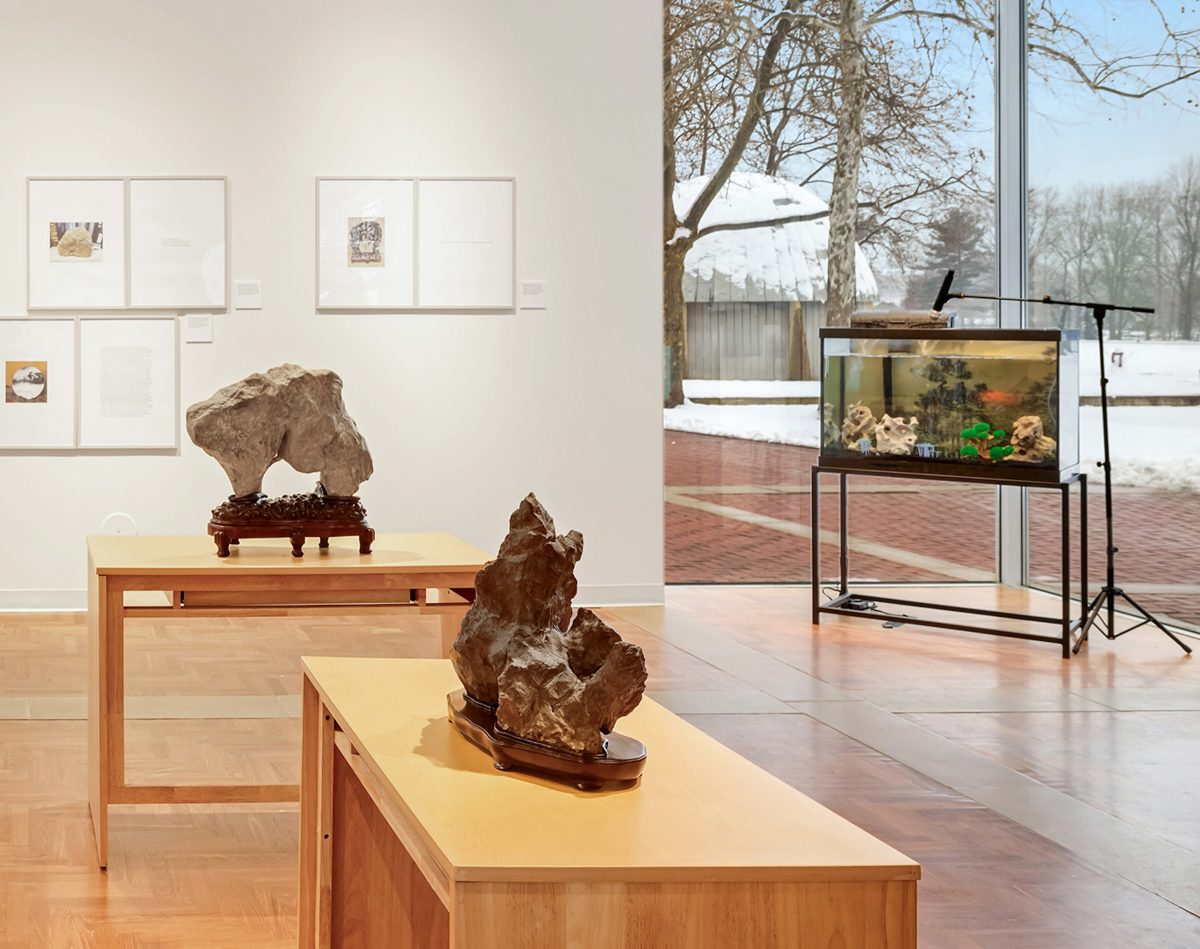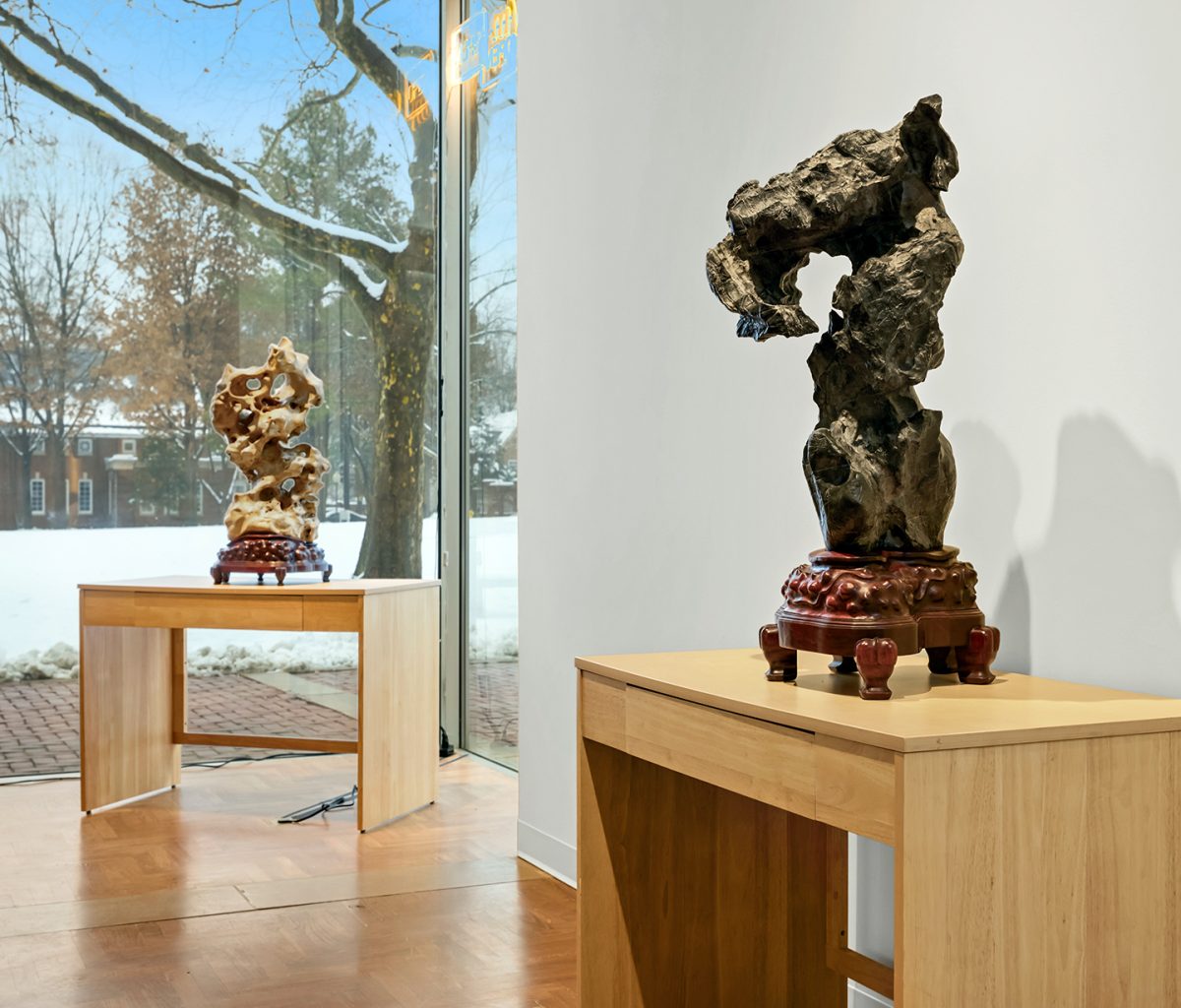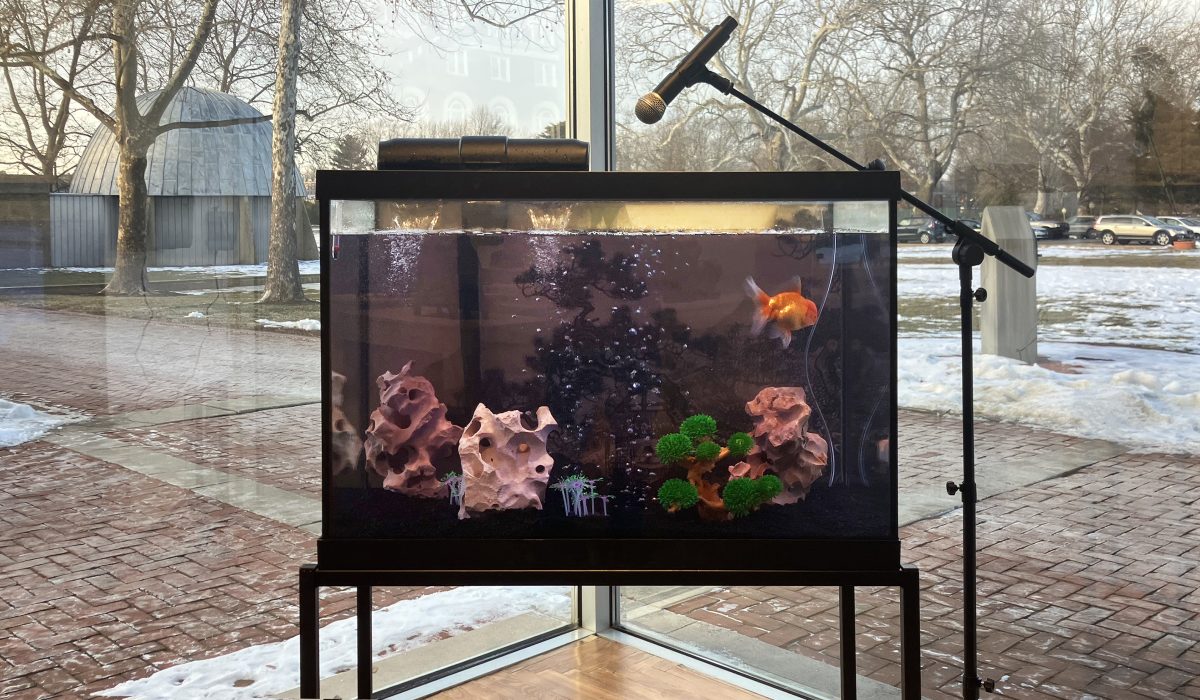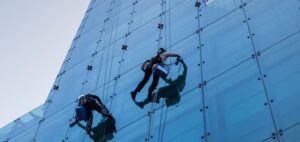Subscribe to our newsletter
Success! Your account was created and you’re signed in.
Please visit My Account to verify and manage your account.
An account was already registered with this email. Please check your inbox for an authentication link.
We’re all partial to a cool rock. I’ve certainly amassed a collection of some neat stones from driveways and beaches in my 27 years. But are they art? If so … Is nature the artist? At the Elizabeth Myers Mitchell Art Museum (stylized “/m” for short) at St. John’s College in Annapolis, Maryland, an exhibition of gongshi, naturally shaped rocks valued by Chinese literati since the Tang dynasty, broaches this very question with the help of its inaugural scholar-in-residence — Bai Jo, the Giant Oranda goldfish (also known as the “bubble-headed” goldfish).
You can check your calendar all you want, but Bai Jo’s residency is no April Fools’ joke. Reportedly hailing from Anne Arundel County’s Stormwater Infrastructure Management administration team after clearing his civil service examination in 2023, Bai Jo (also known as “Parsley” to the /m team) assumed the new role at the museum during its Nature’s Readymades exhibition. Organized by Peter Nesbett and Shelly Bancroft, the exhibition brings together a selection of gongshi from the National Bonsai & Penjing Museum in Washington, DC, and continues at the museum through Sunday, April 6, though Bai Jo’s residency has been extended through July.
Through the exhibition, Nesbett and Bancroft encourage visitors to consider if there can be art without artists, or if nature itself can be considered an artist, as demonstrated by the naturally shaped rocks on display. For centuries, scholars have found wisdom, beauty, and even miniature worlds in their crags, crevices, and legible shapes, interpreting them as evidence of Qi, the inner life or spiritual force within the universe that animates the body.
Bai Jo, with his fluorescent orange-ness and unpredictable movements, resides among the gongshi in Nature’s Readymades.
“He shares something important with the rocks, and that is an ambiguous relationship to the museum,” Nesbett and Bancroft expressed to Hyperallergic. “Gongshi are aesthetic objects — they are meant to be looked at. That said, they lack many attributes intrinsic to artistic objects: They aren’t made by humans, are un-authored, and undated.”
But they underscore that it’s the same case for Bai Jo, noting that “he is alien to this space.”
The curators added: “We should remind you that while you contrast the vitality of Bai Jo with rocks, the latter are equally ‘alive.’”

Nesbett and Bancroft stated that Bai Jo’s scholarly residency has been well-received by visitors so far, and his presence further provokes questions about animals and nature as both art objects and artists.
However, not everyone is attuned to the beauty of gongshi. The curators told Hyperallergic that there are attendees “who are disappointed that an AAM-accredited museum like /m is exhibiting ‘a bunch of rocks.’”

Credit: hyperallergic.com










